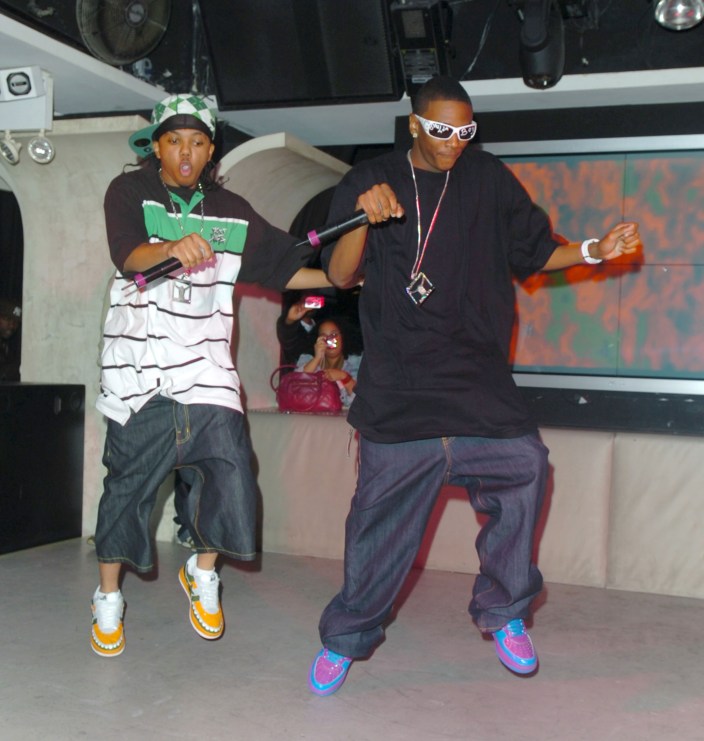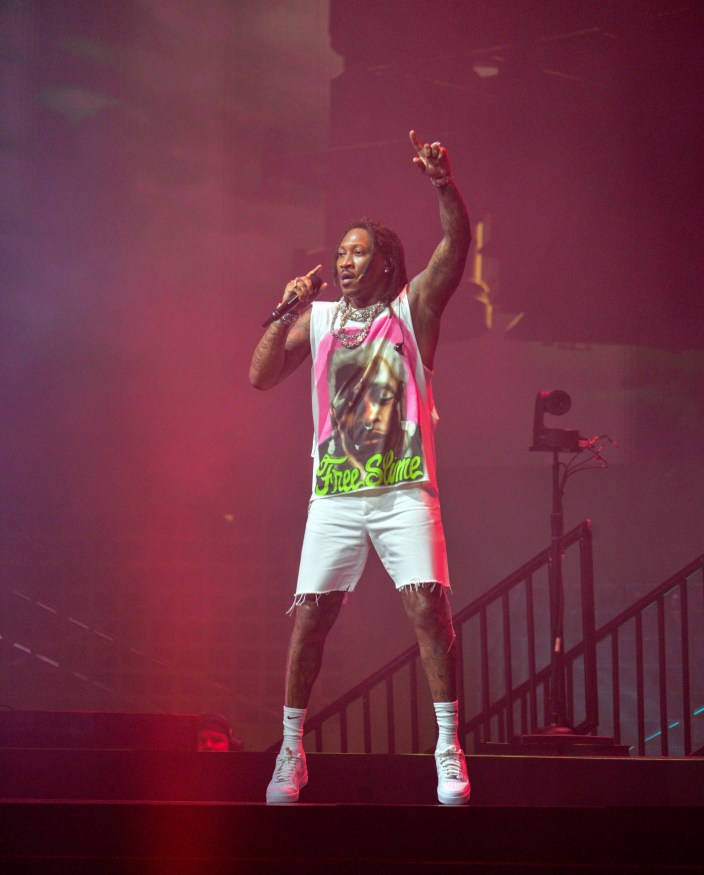In 2002, “Air Force Ones” was released on St. Louis rapper Nelly’s second album. Nellyvilleit became the third top five hit from that album, peaking at number 3. Billboard Hot 100. 23 years later, the then 20-year-old Nike sneaker model, the subject of the song, is still a staple of hip-hop style and street fashion, and the more things change, the more they prove they will remain the same.
Over the past 25 years, streetwear, which is not so new, has experienced a significant share of evolution. But through that, one element is the basis of hip-hop style and therefore the basis of classic sneakers, a broader fashion trend. Whether it was the rapper brand, all the eras of all the burgies in the early 2000s, the rise of rap fashionistas in the 2010s, or the return to more looser, perfect fashion over the past five years, our outfits all started literally at our feet.
This goes back even further, according to sneaker expert Jack “Custoo” Slade. “Sneakers and hip hop obviously had as many ties as I could remember, Run DMC and “My Adidas,” he recalls on Zoom. “We’ve always seen sneakers integrated into hip-hop culture and lifestyle. Something as simple as a fresh prince [Will Smith, star of The Fresh Prince Of Bel-Air] And Martin [Lawrence, star of 1990s sitcom Martin] I’m wearing a JS at the show. And if you have absolutely anything to do with the bond between basketball culture and basketball culture and hip-hop, you’ll see all of those storyline threads coming from a certain place. ”
Slade probably knows. He was one of the earliest and prolific of second-generation sneaker cultural documentaries in the 2010s, following in the footsteps of pioneers like Bobbito Garcia and Scoop Jackson in the 90s. Writing sneaker-centric editorials for online publications such as Complex, Hypebeast, Kicksonfire and Nice Kicks, he had his personal hand in shedding light on the new wave of kick lovers who have helped make sneaker head culture mainstream over the past 15 years.

He agrees with the observation that retro sneakers form the basis of the evolution of style since the early Aughts, but he notes that there was a mini-trend within that tradition, comparing this to the cyclical nature of the overall fashion trend. “Everyone who wears a retro Jordan didn’t actually pop up until the late 2000s, early 2010. Before that, [Nike] The Air Max had a running feel, and before that it was a big basketball shoe from the 90s. Now we’re back in this space where runners are getting cool again. So, as you think fashion is regaining those styles, it’s periodic. The shoe brand remains the same, but the clothing brand has changed. ”
“So the style of old brands that swayed when I was wearing Jordan in the ’80s, a lot of those brands aren’t “cool” anymore,” he says. “But sneaker brands are cool. In the days, these brands aren’t as cool as they used to, so now there are new brands.
Megan Anne Wilson, one of Jack’s contemporaries and colleagues of the 2010s sneaker blog explosion, agrees. The Wilson blog on Sobriquet’s “ShegotGame” online was one of the first to bridge the gap between the fashion and sneaker culture of legacy designers, and her job as a stylist included clients such as NBA players Andre Drummond and Stanley Johnson, NFL Players Brandon Ghee and Tarell Brown. ComplexBed, Mitchell & Ness. This put her in the best position to witness the direct connection between athletes and hip hop.
Assessing the evolution of style over the past 20 years, she says, “I think the main thing is seeing the commercialization of fashion through hip-hop style.” For example, she points out that, like athletes and rappers, the entire team of designers curates not just their looks, but their entire personal brand. “Now it’s very rare to tell artists that they don’t have a full team. And even if there are stylists who work with others, they either have brand managers or now have labels. They have people who are working on the partnership side.

The end result is a feeling that personal touch is lost to everything, but the sneakers continue to be a way for artists, athletes and fans to communicate with identifiers like regionality. “I think people have been missing since that era. [the 2000s] – Whether it’s the age of bad boys, the age of dipsets, or the old Outkast videos, they’re not producing very much, they’re missing out on the sense of this artist who has a personal touch to what they’re wearing. ”
“Is it very difficult to know now whether these trends are simply being manufactured or whether these 20-year-old rappers are really coming up in Y2K fashion?” Megan is curious. “Or do they have a stylist of my age? So it’s changed a lot in how it’s packaged… Then with sneakers, I think we’re seeing that too, in that in the 2010s and even up to 2020, it was resale culture. Who has the most heat? Who has the most things? And now it’s become, what’s your collection? Where’s your style coming from? And I think a lot of the brands haven’t fully caught up to that. We had a customization era, and we had a Very limited-run era. Now it’s like they’re putting everything again, but what’s really new, what’s exciting, or what’s really someone’s style too?”

In finding the answer, Wilson points out regional symbols such as Air Force 1. The Air Force is not only popular in St. Louis, Nelly’s native, but was also a staple food in New York uniforms in 2011. Or “Uptown” known as “Uptown” is Uptown). “For me, I could tell if I was running around New York. “Yeah, I know the guy is from Brooklyn because of how he’s dressed. [Nike Foamposites] It’s like DC, but it’s also uptown. ”
Both experts cited the same recent cultural touchpoint as an indicator of how hip-hop trends are evolving. This February performance of the Super Bowl Halftime Show, captivating Kendrick Lamar’s culture. “Is hip hop something Kendrick had in the Super Bowl?” Slade is wondering. “Do you think it’s hip-hop wearing semi-buggy jeans with bell bottoms and one of them NBA champion leather jackets?

Jeans attract a lot of attention and give you inspiration on the internet, but most of us probably won’t be able to grab the archive classics at regular prices. But you can always combine your look with a fresh kick. In Kendrick’s case, Stockx, a second-hand resale platform focused primarily on sneakers and streetwear, noted that a 400% increase in average bids for sneakers, a pair of Nike Air DT Max ’96s after performance. In the modern age of hip-hop style, whether you follow trends or pursue self-expression, you have to start somewhere. And in Mars Blackmon’s immortal words: “It must be a shoe.”


